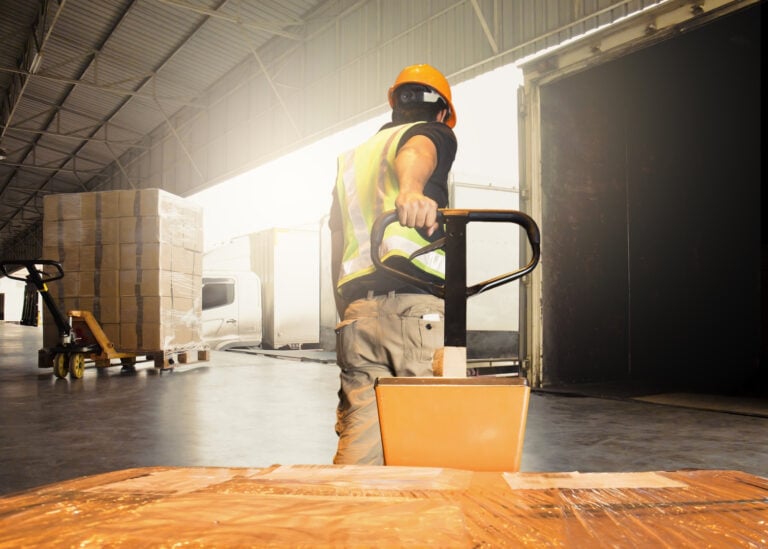Logistics and transport companies are not uncommon in the EU and especially in Germany. In the most recent survey for 2019, there were 14,816 freight forwarders in Germany alone, plus 12,302 postal, courier and express services. Only very few of the companies behind them are in the comfortable position of not having to fear competition – realistically speaking, there should even be no such companies.
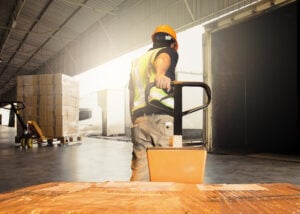
But what does this mean? It means that every company must initiate and operate numerous measures that set it apart from the competition. Of course, very well calculated prices, extremely professional communication and an overall high-quality service are the mark of such unique selling points.
However, the general external image of companies in this sector is equally important. However, in many respects, external impact is not a secret recipe of marketing psychology, but rather relies on “handcrafted” well-done procedures. The most important of these are presented on the following lines.
1. an overall professional-looking business location
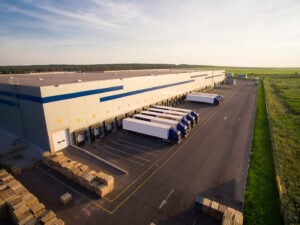
(stock.adobe.com © Aleksei)
One of the most important rules for the company location in logistics is that the transport connections must be first-class. Beyond that, however, the frequent absence of “walk-in customers” in the original sense is too readily taken as an occasion to make the location less attractive from a building and landscape architecture point of view. In extreme cases, this therefore presents itself as a generally unappealing, over-pragmatic hall construction.
Especially under the premise that even customers who do not visit the company in person will get to know its location on the website at the latest (see point 3), considerably more should be done here.
- Colour scheme: Not least due to the fact that the sheet metal façade cladding often used in this profession is offered in all kinds of colours, the buildings should be “extraordinary”. The use of the company’s own corporate colours is a good idea. Alternatively (especially in more rural locations), an attempt can be made to achieve a “camouflage effect” by using suitably coloured panels. They make the halls look less like a foreign body in this environment. Last but not least, it is always a good idea to have the (main) façade decorated with a large-scale mural – for example in the form of a successful drawing of one of the building’s trucks.
- Greenery: Logistics is hard work, but this does not mean that a site should be entirely functional. Bushes, trees and flower beds create a friendly, inviting atmosphere and are also suitable for concealing necessary but visually less inviting necessities – for example, loading bays.
- Maintenance: Visible lorry tracks in interlocking paving, overgrown joints, dead insects around outdoor lights, general dirt … There are many things that make a logistics building less attractive with each passing day if it is not well maintained. No expense should be spared against this. Not least because this condition is also related to the job perception of all employees of the building.
It is also advisable to have a professional photographer (sometimes even a drone photographer) take a rich stock of photos of the site. Especially those where no details (such as truck models) are visible can be used in this way for years, provided no additions are made.
2. positive noticeable trucks
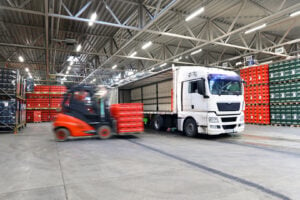
(stock.adobe.com © industrieblick)
For the vast majority of logistics companies, trucks are the most important brand ambassadors in the analogue world. Because where they are, so is the company and its external image. Accordingly, the less positively both tractor and trailer stand out, the worse/weaker this is. Positive in this case means …
- fully painted or wrapped. It is imperative to “go the extra mile” to make the entire vehicle shine in the corporate design. This applies especially to the outer shell of the trailer/semitrailer. Ideally, there should be nothing on the vehicle that is not at least in the corporate colours.
- with all the necessary information. All relevant company information should be legible on all four sides of the truck – including the exact location and contact address. However, please be very careful with “smart” slogans and other slogans.
- immaculately maintained. As we all know, the road is a dirty place. If possible, vehicles should be hosed down once a week, at least roughly, to prevent dirt from accumulating, especially at the rear, which could cover up all the information in the ugliest possible way.
In addition, personalisation by the drivers is to be commended, but it should be “restrained” even within the framework of the legal requirements. Fully decorated, illuminated cabs do not look very professional to many people.
3. a carefully designed website with added value

(stock.adobe.com © Chaosamran_Studio)
In today’s world, the website is the most important first contact with a logistics company for many customers. Here, the external impact stands and falls to a particularly high degree. First of all, it should be mentioned here that a website is never “finished”. Firstly, because in the field of web design and usability, new trends are constantly emerging and replacing others. Secondly, because stagnation in terms of search engine visibility inevitably leads to increasingly poor ranking results.
In fact, this topic is so extensive that it could easily go beyond the scope of this article. Therefore, only the most important points are mentioned here:
- The design should definitely be created and maintained by a professional service provider. Nowadays, web design is definitely not something that can be done on the side by your own employees – even if some providers present it that way.
- The entire site with all its subpages should be logical and coherent. Whoever lands on the homepage (which is likely via the search engine) must see at a glance where they can find what they are looking for.
- Last but not least, with the ranking in mind, there should be a news or, even better, magazine section. It can be designed in the form of a customer magazine – sometimes even in conjunction with an analogue customer magazine. However, both must then be designed with the highest professionalism in mind. Because we are indeed talking about a full-fledged magazine including editorial.
In addition, one basic rule must be observed, especially in the news section: If this area exists, then there must actually be “news” there, and regularly. Anyone who visits a company site at the end of 2021 and finds that the last entry deals with the company Spring Festival 2020 will rightly not get a good impression.
4. promotional items designed with sense and understanding
Some logisticians believe that the time for promotional items or “giveaways” is not only generally over, but that logistics in particular is not suitable for such endeavours. Both must simply be called wrong.
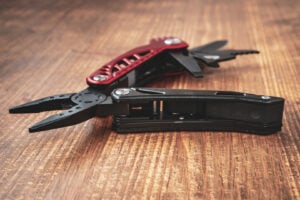
(stock.adobe.com © graja)
Giveaways still establish an emotional connection to a company through their quality as a physical gift – to every company and thus naturally also in logistics.
However, it cannot be denied that there are both good and bad promotional products in this respect. Accordingly, bad is everything that fulfils at least one of the following conditions:
- Mainly reduced to its promotional purpose,
- arbitrary or well known,
- of low quality and/or
- not very suitable for everyday use.
In this sense, an informal baseball cap of the cheapest type with large company lettering on the front is indeed unlikely to be a giveaway whose costs will pay off for the company giving it away in the long term. Shopping bags, (conventional) mugs or coolies fall into a similar category – all things that at least lack any uniqueness if they are reduced to the pure factor of “printed with company name”.
We have already touched on one of the most important rules for contemporary giveaways: The advertising effect through the company logo should be restrained and only a partial component. On the other hand, it is much more important that the recipient should use the item voluntarily, gladly and frequently in everyday life. Only when this creates a pleasant feeling is a real positive and thus promotional effect generated. But what is suitable here?
- Clever tools for pocket and key ring
- Helpers for outdoor activities, for example picnic blankets
- Items related to mobile digitalisation, such as power banks
- Helpers for the kitchen such as (high-quality) chopping boards
Ultimately, the basic idea must be that the advertising impact comes from multifunctional practicality. And since logistics handles a completely unlimited number of products, there is a no less broad field to draw from.
By the way, such gifts not only have an effect on customers, but can also considerably support recruiting.

